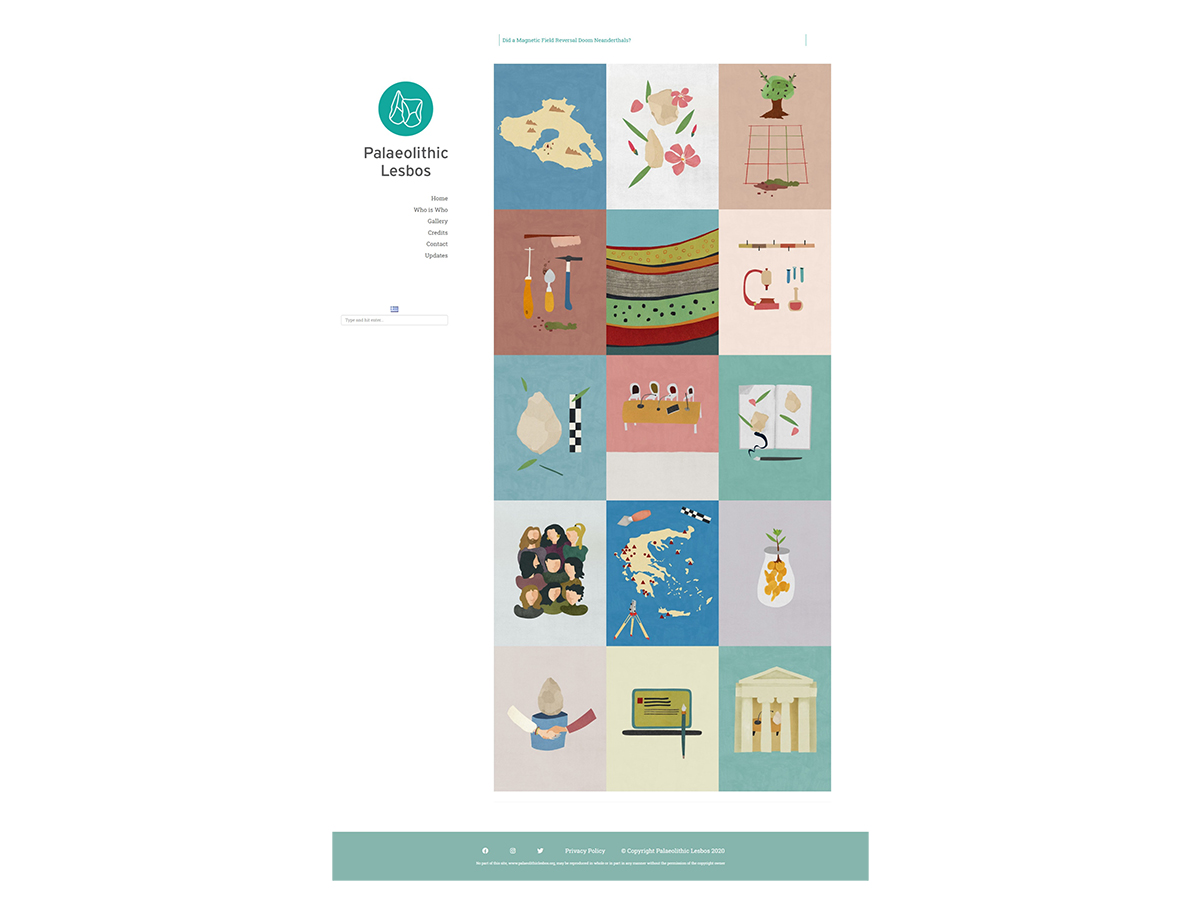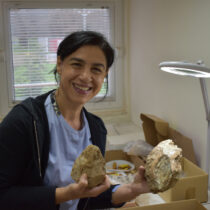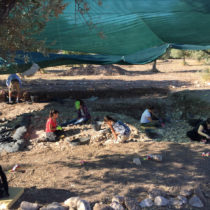The new bilingual (Greek, English) website of the programme “Palaeolithic Lesbos” has recently been launched.
The Palaeolithic Lesbos Project investigates the early settlement of the Aegean region. Since 2012 it has been conducted by the University of Crete in collaboration with other universities and research institutions in Greece and abroad. In this programme archaeologists team up with partners from archaeometry, oceanography, and the geosciences, under the direction of Nena Galanidou, Professor in Prehistoric Archaeology at the Univeristy of Crete.
Research aims to explore the essentials of prehistoric activity of at least the past 500,000 years through systematic excavation conducted at Rodafnidia, an open-air site in the Kalloni Gulf, strategically located close to the Lisvori thermal springs.
Archaeological excavation unveils a lithic industry having Acheulean affinities. Lower Palaeolithic cores, flakes and tools, among which a great number of Large Cutting Tools, have also been discovered during surface survey along the axes connecting Vasilika – Lisvori – Nifida and Polichnitos – Vatera. They are testimonies to the wide spatial range of hominin activity around Lisbori, across the Kalloni basin and southern Lesbos. The project adds a new piece to the still incomplete puzzle of the early Palaeolithic world, at the heart of Eurasia, at the very point where Asia meets Europe, the northeastern Aegean.
The programme’s website contains important information about the history of research at the area and the excavation finds, as well as the latest news in the field of Palaeolithic research in Greece and around the world.





